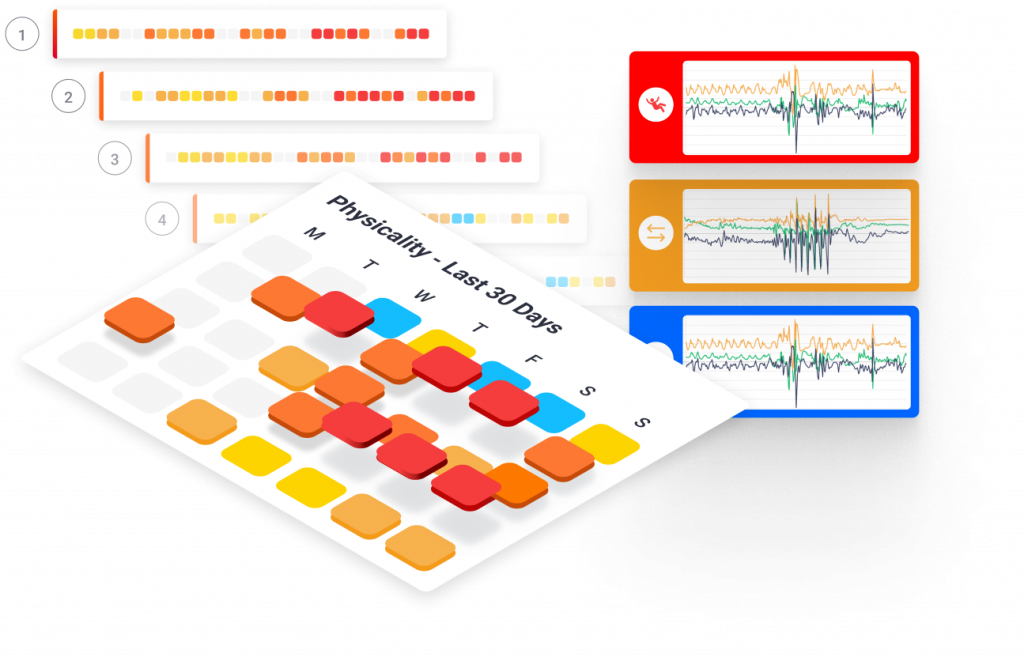Musculoskeletal Disorders
MākuSafe Motion Explorer Addresses Exertion Risk, Strains, MSD’s, And Cumulative Ergonomic Hazards
Motion Explorer provides safety professionals, business leaders, ergonomists, and risk managers with the data they need to uncover potential hazardous motion issues among workers before they become serious injuries. Hazardous motion and ergonomic injuries, like Musculoskeletal Disorders (MSDs) are both common and costly. In fact, MSDs are the single largest category of workplace injuries and are responsible for almost 30% of all workers’ compensation costs, according to the Bureau of Labor Statistics (BLS). Motion Explorer provides the data companies need to better understand and evaluate motions and take corrective action before an injury causes a worker to seek medical attention or lose days of work.


Visualize Worker Effort Expended Over Time
Motion Explorer studies hazardous repetitive and high-force motions over time including; impactful lifting, forceful twisting/turning, hazardous pushing & pulling affecting shoulders/backs, and more. This new tool provides highly visual and interactive insight that is both easy-to-understand and actionable. Algorithmically, Motion Explorer is able to deduce the intensity of a worker’s effort expended and arrive at conclusions about the level of potential impact on them for each day. The worker is then ranked and their physicality can even be compared against other workers. This is accompanied by contributing indicators and deeper data, including types of movement, where it happened and when it happened.

Easily Compare Multiple Data Sets
Motion Explorer, like the rest of the MākuSmart dashboard, enables filtering so it becomes easy to see data points such as:
- Overall physicality of an individual worker or group of workers by role
- Which workers rank highest in terms of effort expended
- How they compare to others, who for example, may do the same job.
MākuSafe gathers data important to understanding risks before incidents occur, all with a high degree of concern for worker privacy not collecting anything personal or biometric.

Avoid Musculoskeletal Disorders (MSDs) And Cumulative Trauma Using Data
MakuSafe has detected data that highlights ergonomic concerns and is being used by clients to reduce risk. Insight like this is difficult to gain, and uncovers conditions that eventually may lead to musculoskeletal disorders (MSD’s), and cumulative trauma over time, including sprains, strains and exertion incidents, which are expensive and a significant focus for many industries, but especially in materials handling jobs.
Examples of Data Insights Uncovered by Motion Explorer:
- One worker in a team, all performing the same lift/twist/turn task, due to data gathered was found to have an unknown nagging shoulder injury. The estimated loss avoided was in excess of $170K in the eyes of the self insured customer.
- Aging workers were performing repetitive motions that were far more forceful and regular than leadership was aware of. The motion was to break up crystallized granular food ingredients, which no one ever thought could be responsible for significant impact over time. The company instituted new processes, and discussed quality with its suppliers as a result of the discovery.
- A worker, who was not thought to be on par with production line staff in terms of risk, exerted significant daily effort in moving work carts from station to station to do maintenance tasks. The carts were found to have broken casters causing needless strain, as a result of data gathered.
- Workers moving styrofoam were triggering hazardous motion indicators signaling high physicality and effort required of workers in lifting/moving materials. This wasn’t believed to be a concern previously because of the perceived weight of the styrofoam.
- A worker, far smaller than anyone on her team, was shown to be exerting herself far more than her coworkers to get the job done. Once her workstation was adjusted for height, the hazardous motion indicators disappeared.
- Workers at four different locations for the same company were all performing the same work roles, in similar facilities, using the same machines at similar workstations. Data showed work roles at one particular facility were working 750% harder in doing their jobs than the same roles being performed at three other sites.
Interested in preventing MSDs and cumulative trauma? Let us show you how Motion Explorer can provide you with the leading-indicator data you need to keep your workers safe and reduce claims!
Schedule Demo

